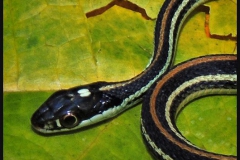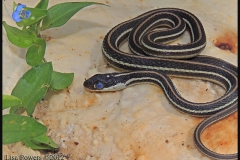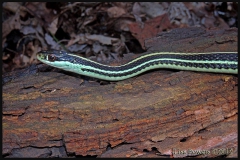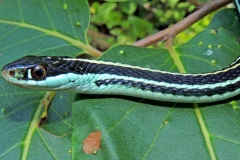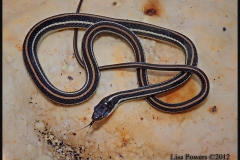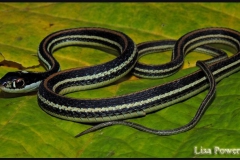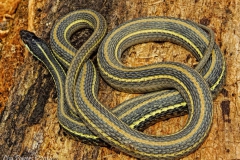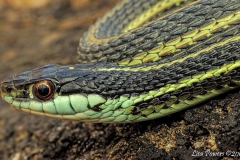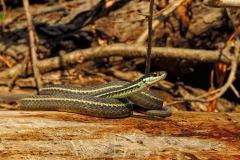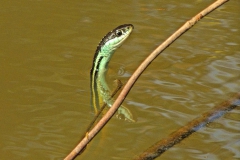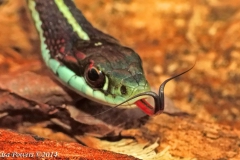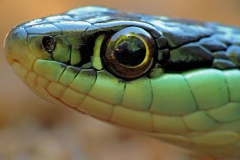
Western Ribbonsnake
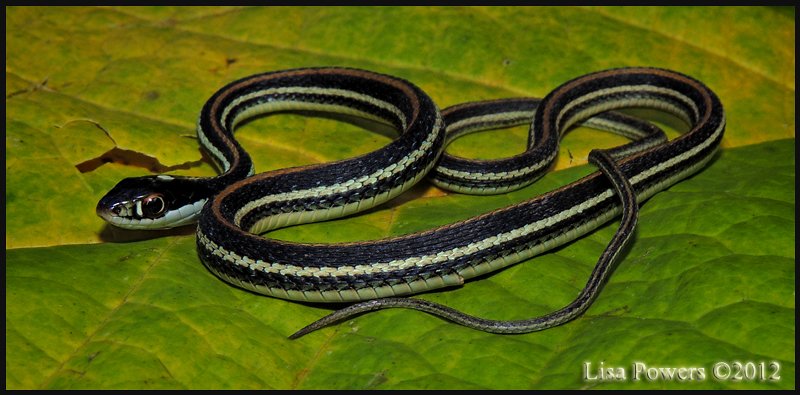
Photo by Lisa Powers
Description: The western ribbonsnake is a medium sized snake generally ranging20.0 to 30.0 inches (the long tail is approximately 1/3 of the total length) with keeled scales. Three light, longitudinal stripes run the length of the black body. The mid-dorsal stripe is usually orange.
Habitat: It may be found in a variety of habitats including pond and stream margins, wetlands and meadows.
Life History: These snakes are equally variable in their diets. They will eat frogs and tadpoles, salamanders, fish and earthworms.
Ribbonsnakes mate in the early spring after emerging from hibernation. They are ovoviviparous and females may give birth from 4 to as many as 28 young in late summer.
Range:
Additional Notes:
Behavior: When alarmed or threatened western ribbonsnakes excrete a foul smelling fluid from the anal glands. They may also flatten their bodies trying to look larger or assume a strike position. They may bite if given no other means of escape.
Subspecies Occurring in Tennessee: Tennessee is home to only 1 subspecies of western ribbonsnake, T. p. proximus (Orange-striped Ribbonsnake).
Ovoviviparous– producing eggs that are hatched within the body, so that the young are born alive but without placental attachment, as certain reptiles or fishes. Dictionary.com Unabridged (v 1.1). Random House, Inc. http://dictionary.reference.com/browse/ovoviviparous (accessed: July 04, 2008).
Distribution of the Western Ribbonsnake in Tennessee

Map by Susan Marden, TWRA, GIS Lab
